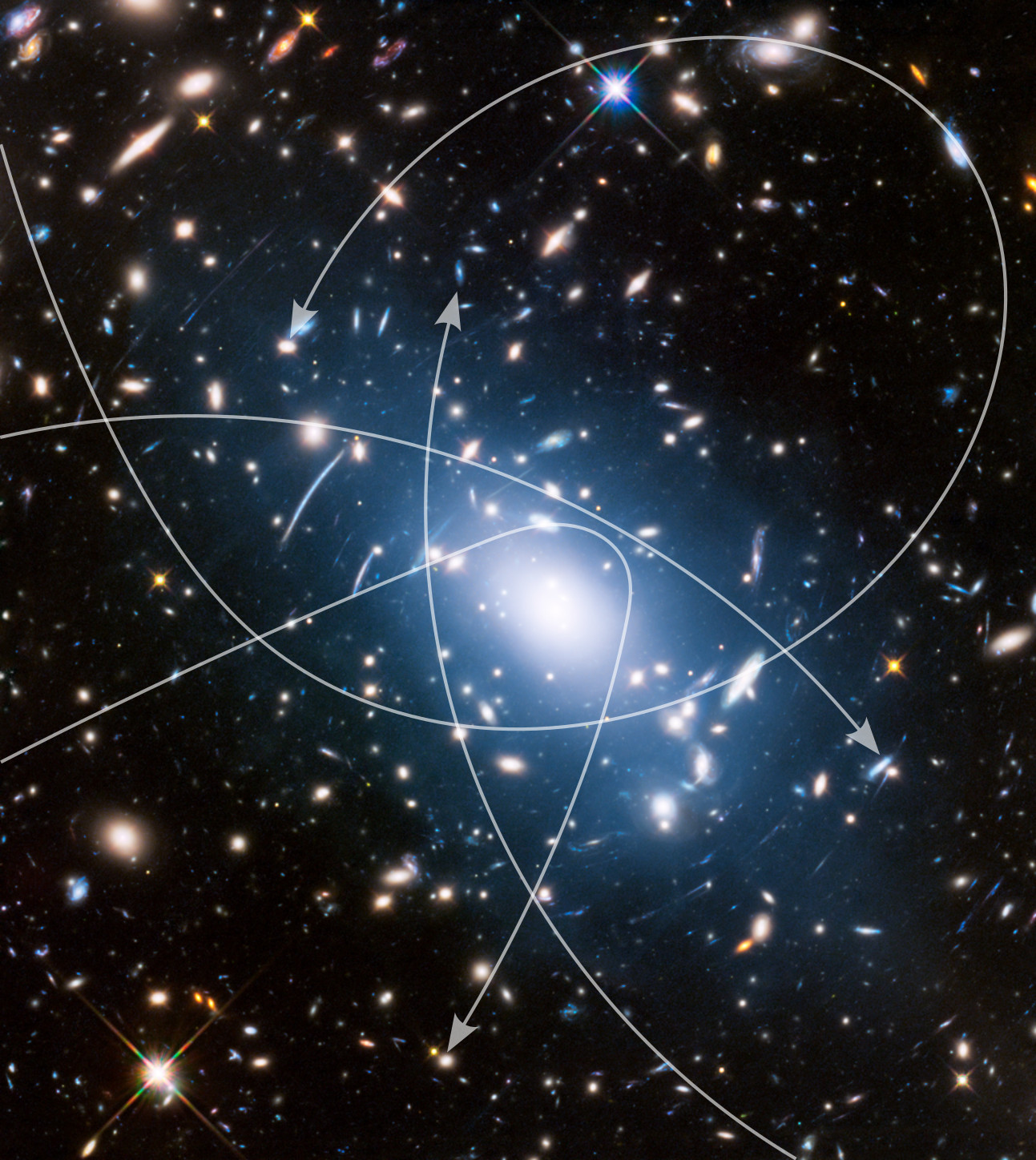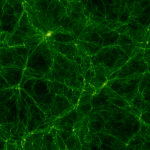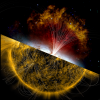
A study led by a team from the Institute for Theoretical and Experimental Astronomy (IATE), using computer simulations, explains the transformation of galaxies that enter and leave a cluster.
By Facundo Rodriguez
facundo.rodriguez@unc.edu.ar
Galaxies tend to cluster and form systems that could have anywhere from a few members to hundreds. The largest systems are called galaxy clusters. In them, there are tens or hundreds of galaxies bound together by gravity. These systems can modify the galaxies that inhabit them primarily through the pressure of their extremely hot gas (hundreds of millions of degrees), which sweeps away the galaxies' own gas, which, in turn, is the galaxies' reservoir of star-forming material. In addition, the gravitational tugs produced by a cluster on galaxies passing close to their central zones can lead to changes in their shape, the loss of part of their stars, or, in extreme cases, even their destruction.
There are some galaxies that, due to their speed and location, are attracted to the cluster, enter it, and then leave it and stay close to it. The English word to define them is 'backsplash', which means something like they splash into the cluster.
This type of galaxy has captured the attention of various teams globally, and they have studied it extensively in recent years. However, we are still trying to determine the consequences of the passage through the cluster on its evolution. This was the challenge taken up by the team led by Andrés Ruiz, Julián Martínez, Valeria Coenda and Hernán Muriel, who research at IATE, with the collaboration of Sofía Cora, from the Instituto de Astrofísica de La Plata, Martín de los Ríos, from the Universidad Autónoma de Madrid, and Cristian Vega-Martínez, from the Universidad de La Serena.
Regarding their goals, Valeria Coenda explains: "Our main motivation was to study the first experience a galaxy has when it enters a cluster. In this way, we were able to separate the changes it undergoes before and the effects of the cluster on its passage through the interior".
Analysis
To study the details of these particular galaxies, they used computer simulations. They chose isolated clusters, i.e. had no other systems nearby. They obtained a sample of 34 galaxy systems. In addition, taking advantage of the fact that the simulations allow them to know the details of the trajectory of the galaxies, they chose those outside the clusters but that had previously entered and left the clusters. Using these criteria, they selected more than 5000 galaxies, divided them into categories and thus obtained more information about their evolution.
When studying the evolutionary stages of galaxies, a key feature is to describe whether or not they are forming stars. Galaxies with lots of available gas form stars, while those that lose gas stop forming stars. "Based on previous work, we classified the galaxies that entered and left the cluster according to whether or not they were forming stars, and we studied how this varied, also taking into account how they passed through the cluster," says Andrés Ruiz.

Illustrative diagram of the displacement of backsplash galaxies. The image shown is of the Abell cluster S1063, and the arrows represent the possible trajectories of galaxies entering and exiting to the cluster. Cluster image credit: NASA / ESA / M. Montes (University of New South Wales)..
Results
From a detailed study, they determined that most of these galaxies that plunge into the group and then exit continue to form stars and have not traversed the central region of the cluster. Therefore, its evolution has not been significantly affected by that passage. Galaxies that stopped forming stars before leaving the cluster instead reach more central regions and thus undergo many more interactions that affect their evolution. Only a small fraction stop forming stars while inside the cluster. On the other hand, those that stop forming stars before entering the cluster do not have a great impact on its history either.
“The overall result of the work is that even though clusters are among the most extreme environments where a galaxy can be, a single pass through these structures will not produce great effects on the vast majority of them. The fundamental factor is how close these galaxies pass to the centre of the cluster, that is what alters them the most”, sums up Julián Martinez. To which Valeria adds: "However, a long time after leaving the cluster they will continue to feel its effect."
“Cluster environments are interesting environments because there are objects with diverse histories. In this work, we were able to go further and, through simulations, explain the details of these galaxies entering and leaving clusters. This gives us information about a population that we cannot easily identify in observations”, concludes Hernán Muriel.
Future work
After the results were found, the team is working to expand their study and obtain more details about the evolution of these galaxies and others with similar histories. To do this, they added a doctoral student who is using other types of simulations that could provide more details about some of the processes that occur during the passage and extend the study to less numerous galaxy systems than clusters.
With the results of this work, the new tools and the experience of the team, the perspectives are promising to continue providing explanations about the processes that drive the transformations of galaxies in different environments.
Scientific publication |
| Backsplash galaxies and their impact on galaxy evolution: a three stage, four-type perspective Authors | Andrés Nicolás Ruiz (IATE, CONICET/UNC, Argentina), Hector Julián Martínez (IATE, CONICET/UNC, Argentina), Valeria Coenda (IATE, CONICET/UNC, Argentina), Hernán Muriel (IATE, CONICET/UNC, Argentina), Sofía Cora (Instituto de Astrofísica de La Plata, Argentina), Martín de los Ríos (Universidad Autónoma de Madrid, España) & Cristian Vega-Martínez (Universidad de La Serena, Chile). |








